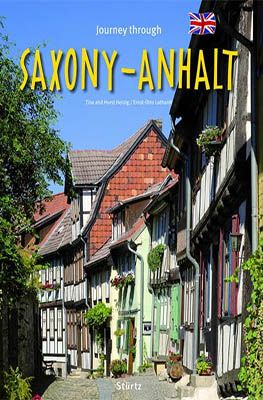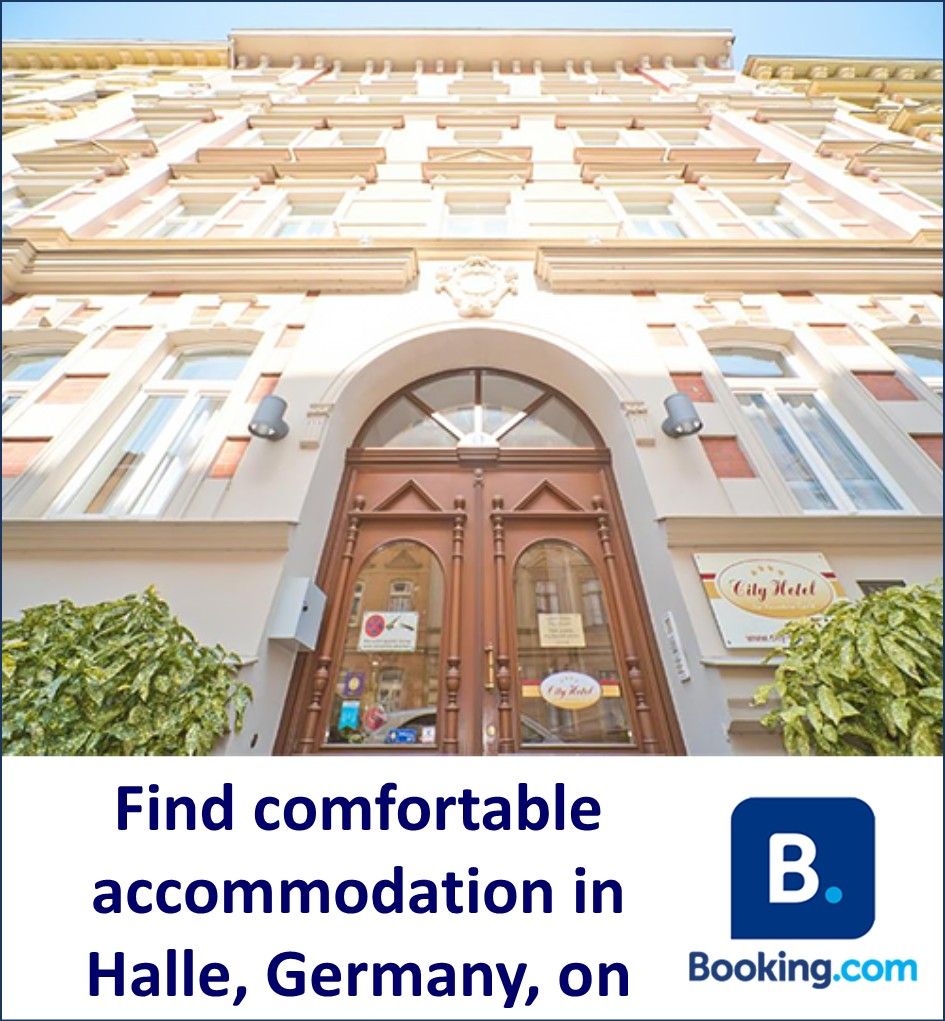Picture this: you’re strolling through the streets of a city where history and modernity go hand in hand. Halle, located in the heart of Saxony-Anhalt, is such a city. A place where you can get lost in the stories of centuries past, whilst simultaneously savouring the vibrant atmosphere of modern city life. This city surprises you time and again, whether you’re a history enthusiast or simply looking for an unknown city in Germany. A city trip to Halle will not disappoint you.
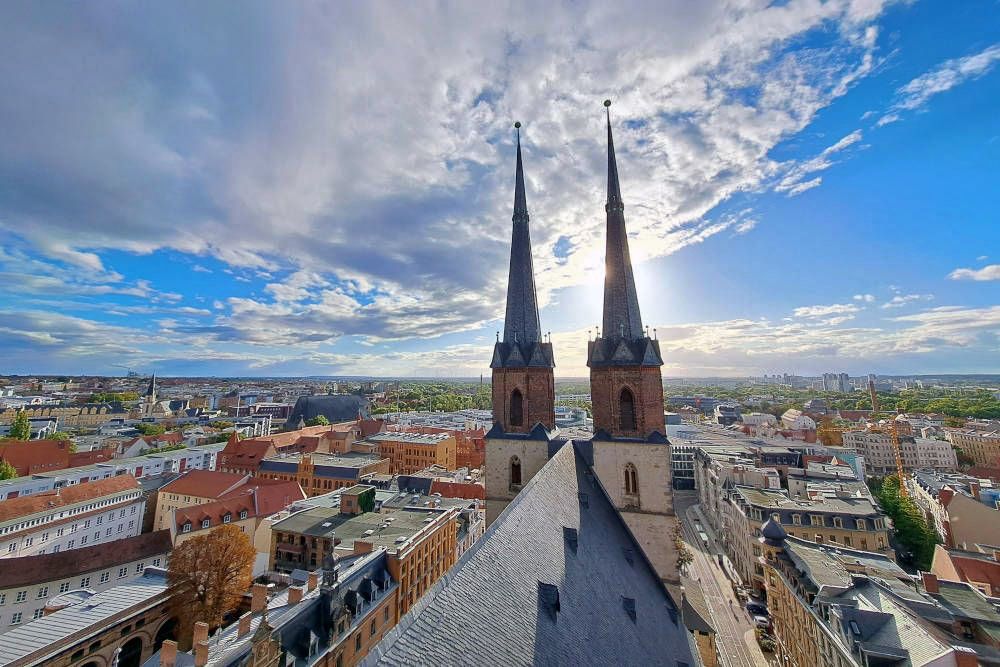
Halle: from salt city to university town
Halle has a rich and diverse history dating back to the early Middle Ages. The city developed as an important trading and salt city. The salt extracted here from the Saale River was of great value and ensured the prosperity of the region. Halle was even referred to as “Salzstadt”, and salt extraction was the main source of income for centuries.
In the 17th and 18th centuries, Halle grew into a cultural and intellectual centre, especially thanks to the establishment of Martin Luther University in 1694. During the industrial revolution, Halle developed into an important hub for trade and industry. The city played an essential role in the German economy. This is reflected in the impressive industrial architecture that we encounter in various places in the city.
Today, Halle is a vibrant university city, where the historical architecture and the young, dynamic population create a special atmosphere.
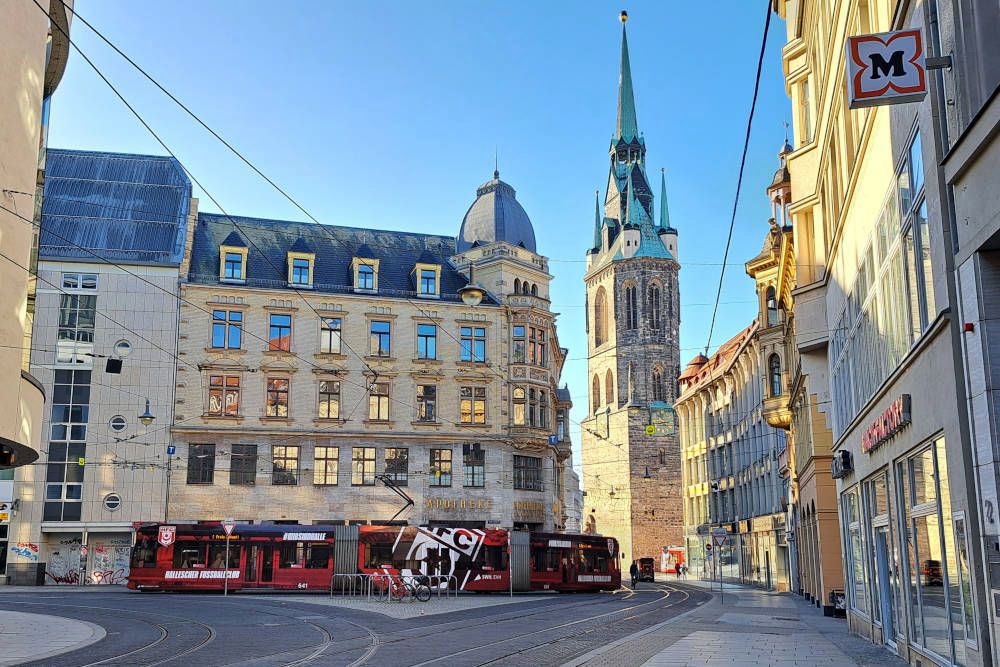
Highlights of a city trip to Halle
We explore the city on foot. And so we discover various attractions of Halle.
Beating heart of the city: market square and Marktkirche
We begin our exploration at the market square. This is the lively centre of the city. Here we find some of the main attractions of Halle. The impressive Marktkirche Unser Lieben Frauen dominates the square with its four towers. Once two medieval churches stood here, but in the 16th century, they were merged into one impressive house of worship. What remained are the four slender towers that rise above the city like sentinels. They give Halle’s skyline its unique silhouette. But the real wonder awaits inside.
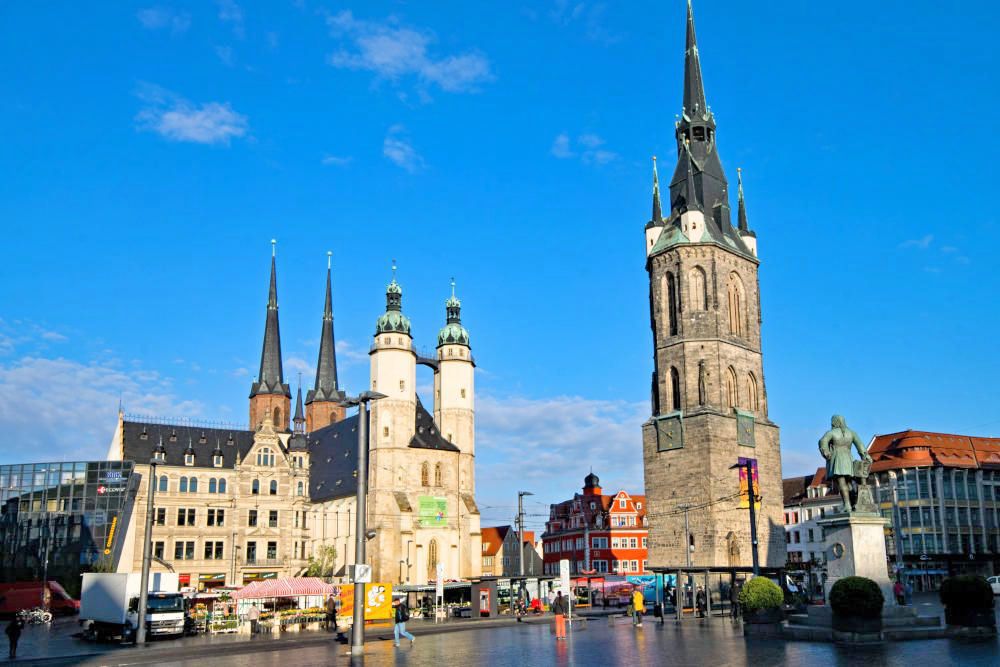
We enter the church. The interior of the church is beautiful. The light space, flooded with colour by the beautiful stained glass, feels almost serene. The graceful vault, supported by slender columns, draws our gaze upwards. The beautiful wooden pulpit and the imposing baroque organ by Friedrich Ladegast remind us of the city’s musical tradition. Johann Sebastian Bach himself played this organ. In the middle of the church stands a modest but historic baptismal font. This is where the famous composer Georg Friedrich Händel was baptised in 1685.
We don’t miss the chance to climb the towers. After a steep climb, we finally stand at the top. On the roof, we are rewarded with a breathtaking view over the market square. Below, it’s bustling with activity: stalls fill the square and the crowd is growing, ready for a festival that’s about to begin. This way, we experience a lively celebration during our city trip to Halle.
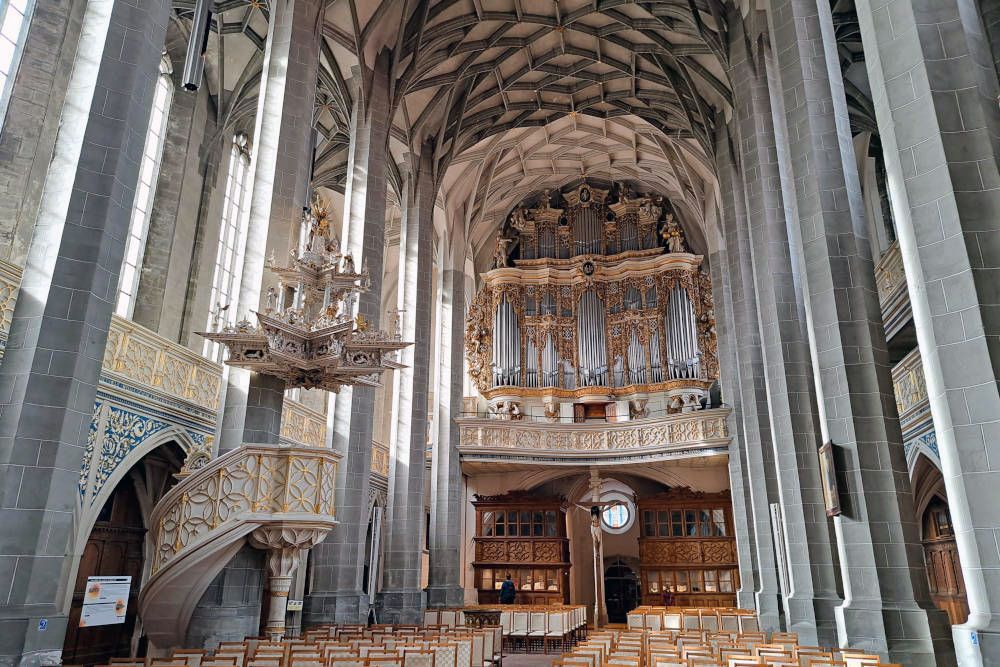
Roter Turm
Next to the church stands the Roter Turm, one of Halle’s most recognisable structures. This freestanding bell tower from the 15th century, together with the towers of the Marktkirche, forms the city’s characteristic silhouette. At over 80 metres tall, it houses the largest carillon in Europe. We’re lucky: as we walk across the square, we hear the bells playing a melody.
On the market square, we also find the statue of Händel, standing proudly in the centre. This statue reminds us of how important this composer is to the city and how his legacy is still celebrated.
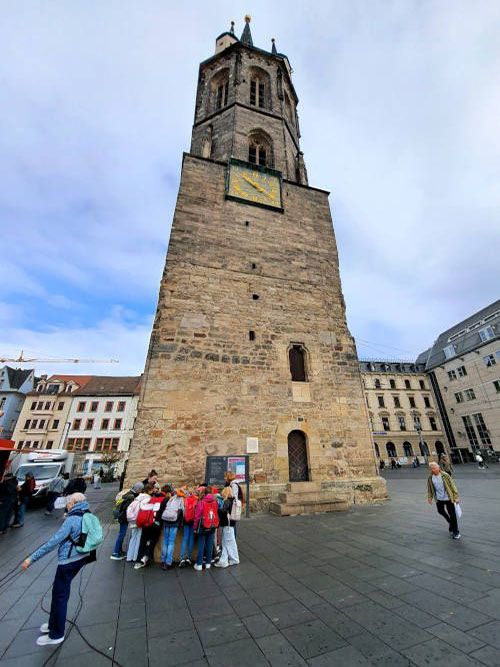
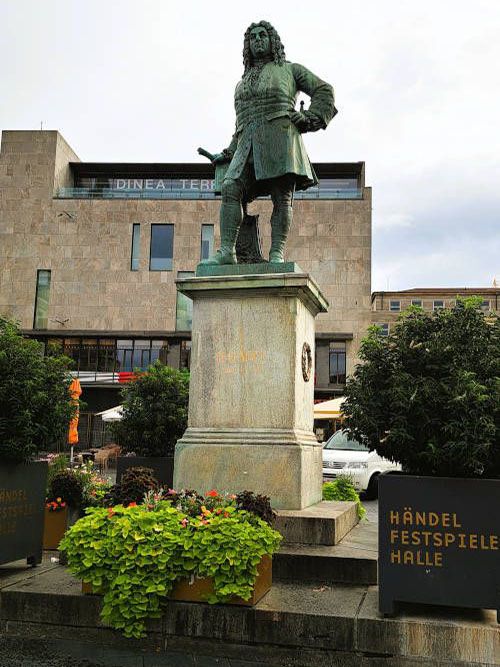
Händel and the musical history of Halle
Halle is the birthplace of the famous composer Georg Friedrich Händel. His name is inextricably linked to the city. In the Händel-Haus, his birthplace, we learn everything about his life and work. This museum takes us into the world of baroque music and shows how Händel broke through internationally from Halle.
Many concerts are also organised in the city that honour his musical legacy. The annual Händel Festival attracts music lovers from all over the world. Even if you’re not a big fan of classical music, a visit to this museum is a fascinating experience that underlines the significance of Halle in music history.
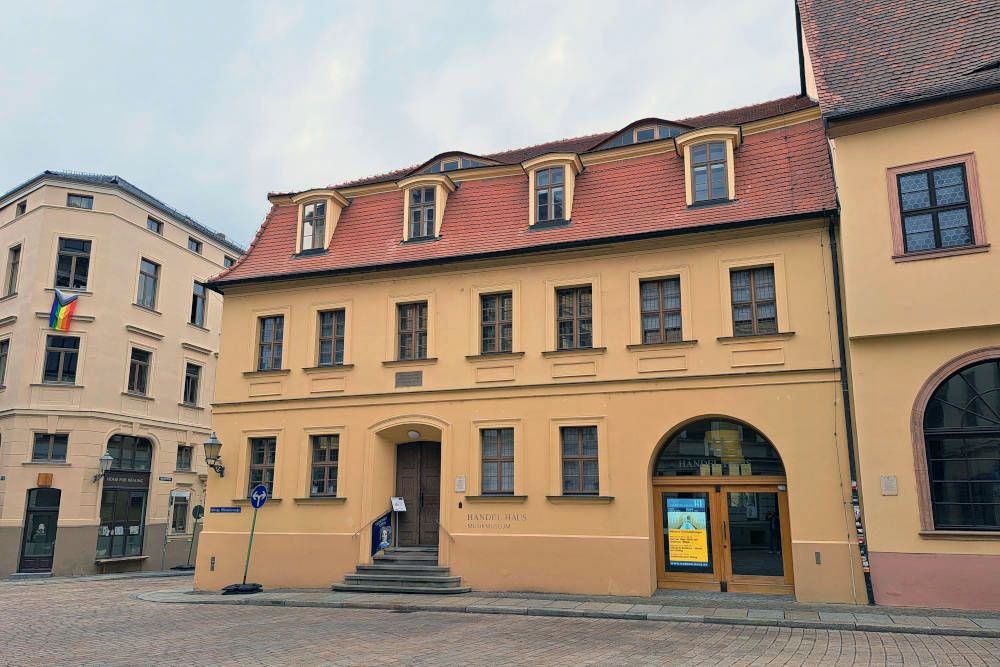
Halle Cathedral: religious and historical monument
From the outside, Halle Cathedral looks somewhat clumsy. No graceful towers, no exuberant decorations like the Marktkirche. The massive structure looks more like a monastery church than a cathedral. But as soon as we push open the heavy doors, everything changes.
Inside, a sea of space opens up. The tall, slender columns seem to stretch endlessly towards the vault, which floats above us like a celestial dome. The soft light falls through the high windows and casts a glow on the walls. It provides a fairy-tale illumination of the interior.
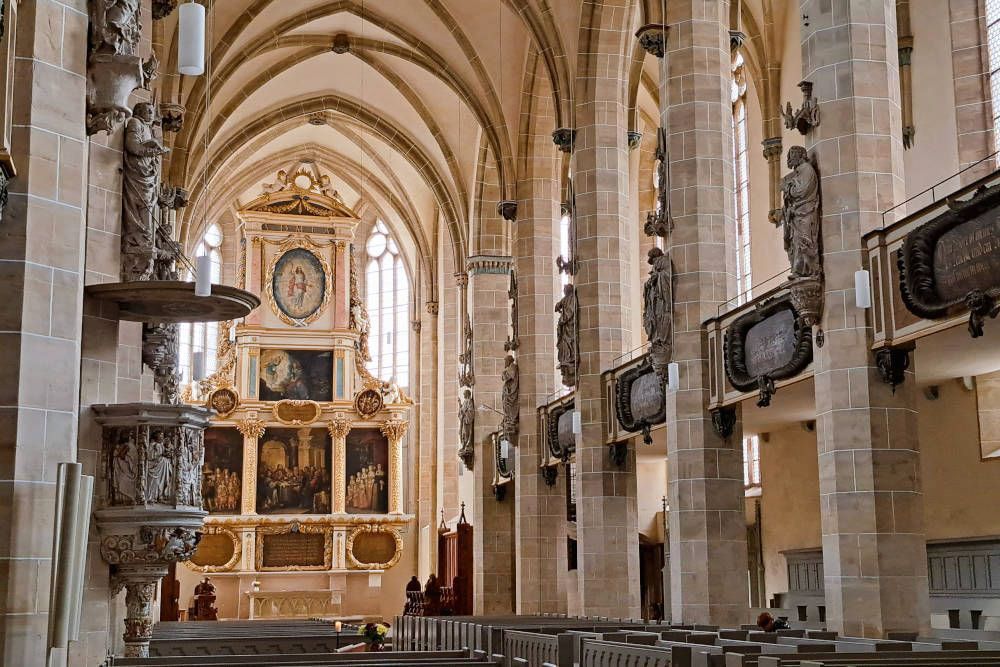
This was once a Dominican monastery church. You can still feel that subdued atmosphere. But the art treasures give the space a royal grandeur. The baroque altarpieces, the richly decorated choir stalls and the detailed paintings along the walls immediately draw attention. The organ is a masterpiece from the baroque period.
Halle Cathedral may not be the most graceful church from the outside, but those who step inside discover a hidden gem. A place of tranquillity, beauty and history that you certainly shouldn’t miss.
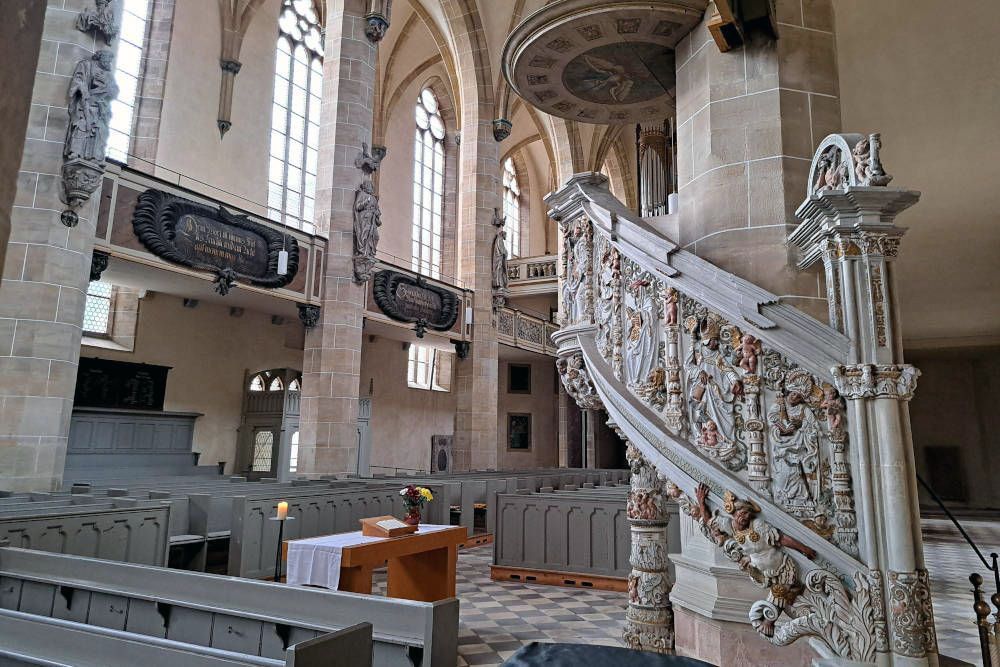
Beatles Museum, a surprise in Halle
As soon as we step into the Beatles Museum, we are immersed in the world of the “Fab Four”. Everywhere we look, we see memorabilia: rare records, autographs, concert posters and original photos of John, Paul, George and Ringo. It feels like we’re taking a time trip through the ’60s, when Beatlemania conquered the world. The music of the legendary pop group fills every room. We softly sing along to the familiar songs.
More than 2,500 objects tell the story of the Beatles here. From their first performances in the clubs of Liverpool and Hamburg to their worldwide superstar status. We see clothes they wore, signed instruments, posters and album covers. There’s even a reconstruction of a typical teenage room from that time, complete with Beatles wallpaper and LPs on the floor.
But why is such a large Beatles museum in Halle of all places? That’s because of Peter Tschirsch. This passionate collector wanted to share his enormous collection with the public. What began as a small exhibition grew into one of the most extensive Beatles collections in the world.
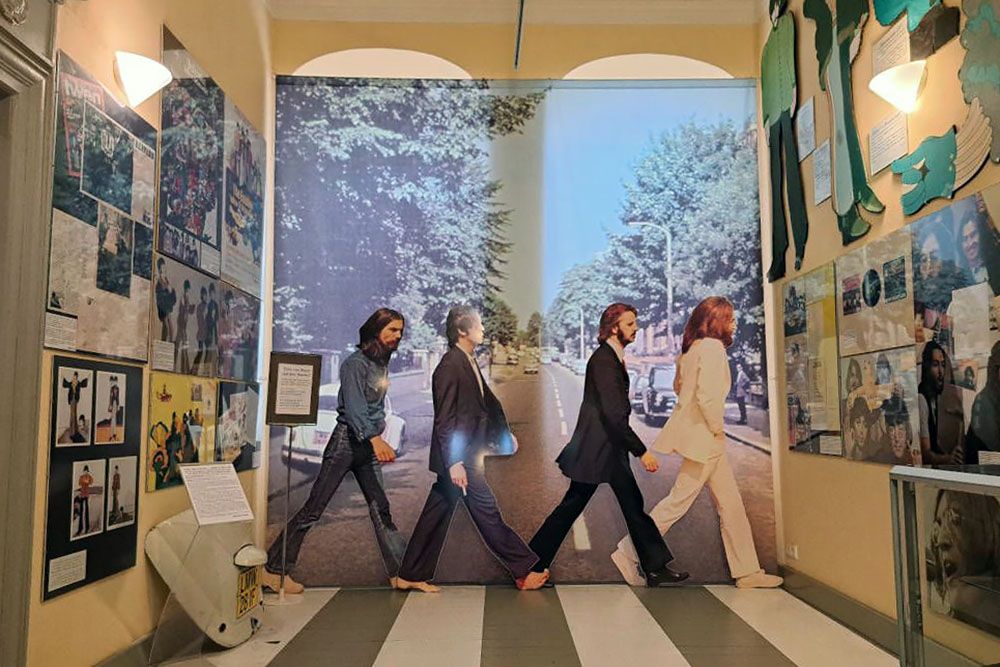
Stadtgottesacker, impressive cemetery
We push open the wrought iron gate and enter the Stadtgottesacker. Immediately, a deep calm surrounds us. The city seems far away, the sounds are muffled, only the rustling of the trees and the soft chirping of birds break the silence. Before us stretches an almost symmetrical whole: a long gallery of round arches, decorated with detailed reliefs and inscriptions, framed by old gravestones and weathered statues.
This historic cemetery from the 16th century is one of the most beautiful Renaissance monuments north of the Alps. Inspired by the Italian Camposanto in Pisa, architect Nickel Hoffmann designed this resting place. The semicircular arches and sandstone details give the whole a meditative atmosphere. Famous residents of Halle are buried here: scientists, artists and mayors, whose names and portraits still adorn the grave niches.
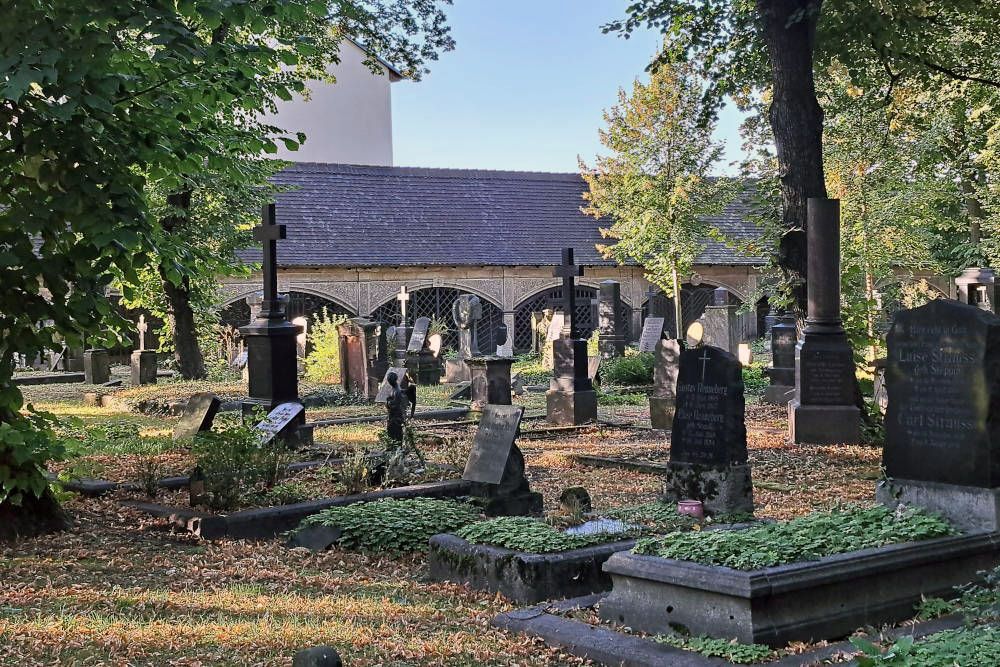
Art and history in Moritzburg Castle
Our journey leads us to Schloss Moritzburg, an impressive castle from the 15th century that now houses an art museum. Here we find a mix of old masters and modern artworks, a beautiful combination of history and contemporary culture. For art lovers, this is one of the most beautiful sights in Halle. The castle also offers a magnificent view over the city.
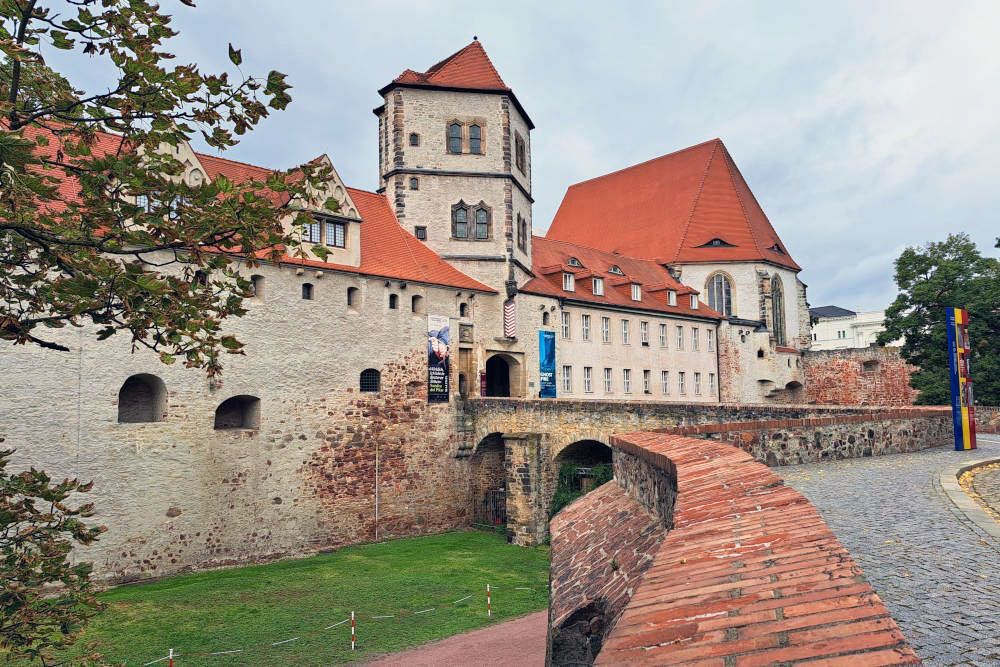
Unique finds in the Landesmuseum für Vorgeschichte
The Landesmuseum für Vorgeschichte is a treasure trove of prehistory. Here you discover impressive finds from thousands of years of history, but the absolute highlight is the Nebra Sky Disc. This 3,600-year-old bronze disc, inlaid with gold, shows the oldest known representation of the cosmos.
We stand face to face with a masterpiece from the Bronze Age, an object that has completely changed our view of prehistory. Besides the sky disc, the museum houses fascinating archaeological finds, from mighty weapons to ancient works of art.
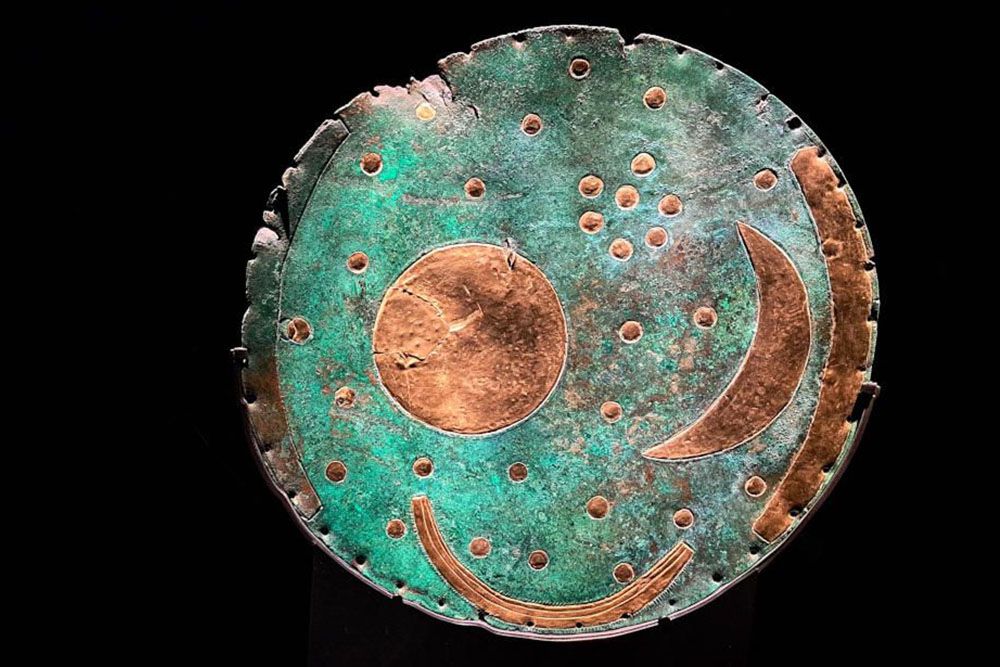
Other attractions in Halle
In addition to the aforementioned attractions of Halle, there are several other beautiful places in the city. If you have time left during your city trip to Halle, you can also admire these monuments of the city:
- Halle Court, an imposing neo-Gothic building.
- Leipziger Turm, an old city wall tower that reminds of the fortifications of yesteryear.
- Old Market, an atmospheric square with cosy cafes and historic buildings.
- Graseweghaus, a charming half-timbered house with a special history.
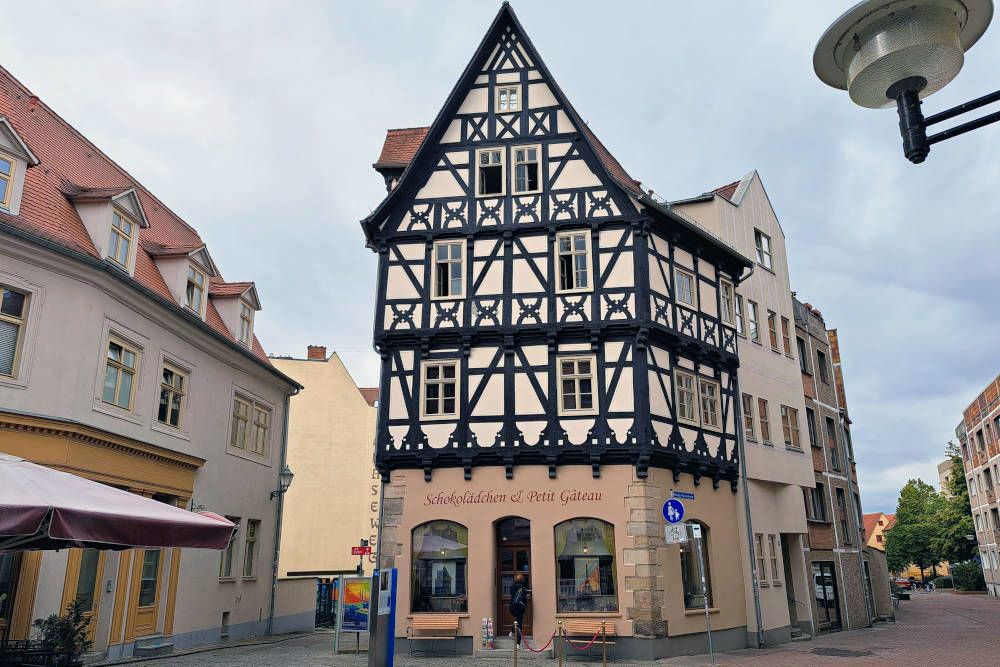
Highlights in the vicinity of Halle
Halle is located in a region full of nature and culture. Besides a city trip to Halle, this is the chance to discover the region. Because in the immediate vicinity there are many more interesting places to visit. In our blog about the highlights of Saxony-Anhalt, we describe them in detail. That’s why we only mention them briefly here.
- Naumburg and the impressive cathedral
- Burg Querfurt
- Monastery of Sankt Marien zur Pforte
- Neuenburg Castle
- Discovery site and visitor centre of the Nebra Sky Disc
- Vineyards of the Herzoglichen Weinberg
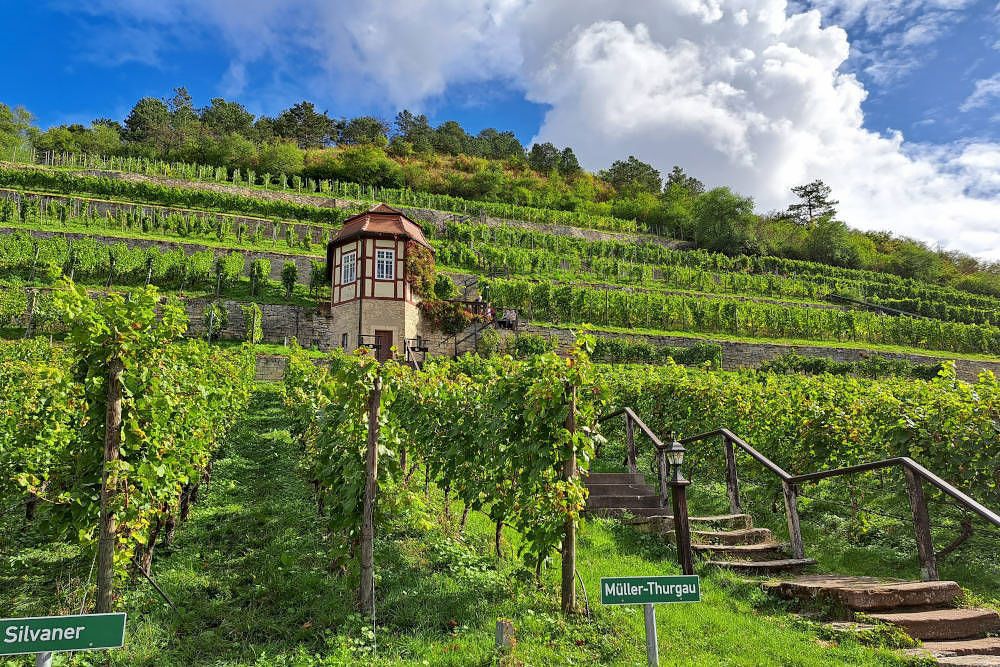
A city trip to Halle, a city that enchants
Halle is a city that perfectly combines history, culture and nature. Whether we’re walking through the cobbled streets, enjoying Händel’s music or relaxing along the Saale River, Halle continues to surprise us. It’s a city that invites you to look further, to discover and to enjoy everything it has to offer. If you’re looking for an authentic and undiscovered German city full of charm, you should definitely consider a city trip to Halle!
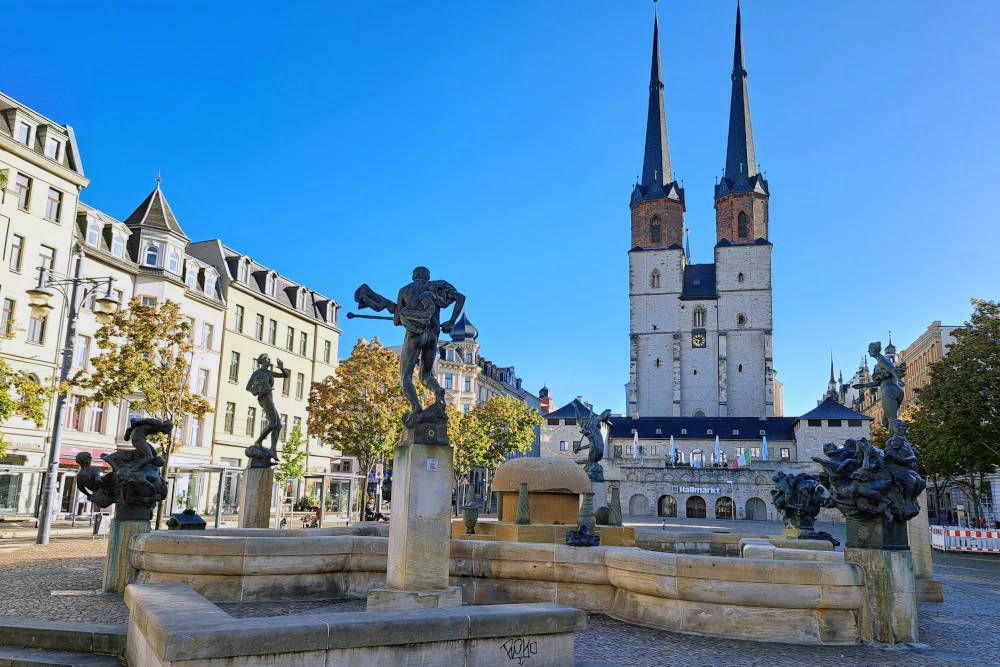
Need-to-knows about a city trip to Halle, Germany
Halle is located in eastern Germany, in the state of Saxony-Anhalt. The city is situated on the Saale River, about 30 kilometres northwest of Leipzig. It is one of the oldest cities in the region and has a rich history and a vibrant culture.
These highlights should not be missed during your city trip to Halle:
- Market Square. The bustling heart of the city, surrounded by historic buildings and lively market stalls.
- Marktkirche Unser Lieben Frauen. An impressive Gothic church with four towers and a beautiful interior.
- Halle Cathedral. Austere on the outside, but inside a magnificent Renaissance monument with baroque artworks.
- Händel-Haus. The birthplace of composer Georg Friedrich Händel, now a museum about his life and work.
- Beatles Museum. A surprisingly large collection about the "Fab Four", collected by a passionate fan.
- Landesmuseum für Vorgeschichte. Here lies the famous Nebra Sky Disc, the oldest star chart in the world.
- Stadtgottesacker. One of the most beautiful Renaissance cemeteries north of the Alps, with atmospheric arches and inscriptions.
- Moritzburg. An imposing castle that now houses a museum with an impressive art collection.
Absolutely! Halle is a city full of surprises, where history and culture go hand in hand. The atmospheric market square, surrounded by historic buildings, forms the lively heart of the city. Culture lovers can indulge themselves in the Marktkirche, the Cathedral and the Händel-Haus, while the Beatles Museum is an unexpected but fascinating addition. Halle also has an impressive heritage, such as the Stadtgottesacker, one of the most beautiful Renaissance cemeteries in Germany. For art and history, there are the Moritzburg and the Landesmuseum für Vorgeschichte, where the world-famous Nebra Sky Disc can be admired. With a relaxed atmosphere, beautiful parks along the Saale and a vibrant student population, Halle is a city that offers more than you might think at first glance.
These highlights of Saxony-Anhalt are located in the vicinity of Halle:
- Naumburg and the impressive cathedral. The beautiful Naumburg Cathedral, a UNESCO World Heritage site, is known for its impressive medieval statues and stained glass windows.
- Burg Querfurt. One of the largest and best-preserved castles in Central Germany, with imposing towers and a rich history.
- Monastery of Sankt Marien zur Pforte. A former Cistercian monastery with a serene atmosphere and beautiful Gothic architecture.
- Neuenburg Castle. An impressive medieval castle in Freyburg, once an important fortress of the landgraves of Thuringia.
- Discovery site of the Nebra Sky Disc. On the Mittelberg, near Nebra, the famous Nebra Sky Disc was discovered; a visitor centre tells the fascinating story.
- Vineyards of the Herzoglichen Weinberg. In Freyburg, these historic vineyards are located, where you can taste wine in a picturesque setting.
These restaurants are popular with both residents of Halle and tourists:
- Gasthaus Zum Schad. A traditional German restaurant in the heart of the old town, known for its authentic atmosphere and classic German dishes.
- Restaurant June. A modern restaurant serving seasonal vegetarian dishes, with a focus on fresh, local ingredients.
- Wenzel Prager Bierstuben Halle. An atmospheric restaurant with hearty Czech dishes and an extensive selection of beers.
- Alchimistenklause. A cosy restaurant with German and Central European specialities, loved for its homely atmosphere.
- Gaststätte Bruchbude. A restaurant with hearty, homemade dishes and a relaxed atmosphere. Tuesday is always "Schnitzel Day".
Halle has a wide range of accommodation options. These are good hotels in Halle:
- the niu Ridge Halle Central: located at Riebeckplatz, this modern hotel offers comfortable rooms and a central location close to the train station. A large hotel that welcomes a mix of tourists and business travellers with all due respect. The breakfast is very extensive and tasty. However, it is very busy in the breakfast room.
- Hotel Atlas Halle: a bit further from the centre, you'll find this hotel with spacious rooms, an extensive breakfast buffet and easy access to public transport.
- Dorint Charlottenhof Halle (Saale): this four-star superior hotel combines Art Nouveau charm with modern facilities, including a wellness centre and an excellent restaurant.
- B&B Hotel Halle (Saale): a budget-friendly option with clean, comfortable rooms and a good location near the city centre.
- City-Hotel Am Wasserturm: this hotel offers cosy rooms and is within walking distance of the city's main attractions.
These accommodations are popular and offer a comfortable stay during your visit to Halle. This is the overview of all accommodations in Halle.
We visited Halle in Saxony-Anhalt at the invitation of the German Tourist Board and the Saxony-Anhalt region. We have written the blog independently and objectively based on our own impressions.

